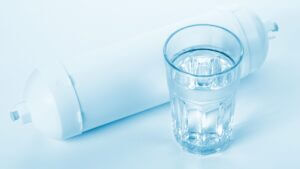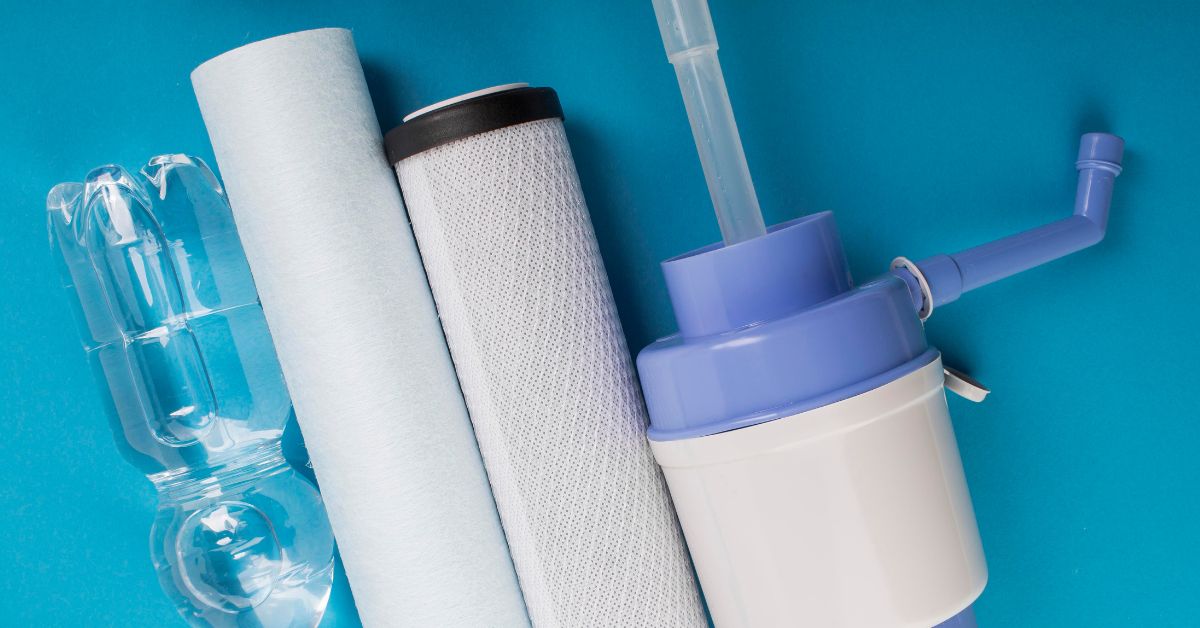Regarding water tanks, the average person might not give much thought to the intricate details that ensure a clean, safe, and high-quality water supply. Many homeowners and businesses rely on water tanks to store and distribute water for various purposes. But a crucial question often arises in water storage: Do water tanks have filters? This seemingly simple inquiry delves into a world of essential considerations that impact the quality of water you rely on daily.
In this article, we’ll delve into water tank filtration systems, exploring their significance, types, installation, and maintenance. Buckle up as we uncover the secrets behind ensuring clean and safe water from your water tank.
How Do Water Tanks Work?
Before answering whether water tanks have filters, let’s first understand how these tanks operate. A basic knowledge of their functionality will help us appreciate the role of filtration in these systems.
Collection of Rainwater
Water tanks are primarily used to collect and store rainwater. They are strategically placed to capture rainwater runoff from rooftops and other surfaces. This collected rainwater is then stored in the tank for future use.
Storage of Water
Once the rainwater is collected, it is stored in the tank until needed. The tank serves as a reservoir, ensuring a constant water supply even during dry spells or water shortages.
Distribution
Water is pumped or gravity-fed from the tank to the desired location when required. This distribution system ensures that you have access to water for various purposes.
Do Water Tanks Have Filters?
The short answer to the question “Do Water Tanks Have Filters?” is unquestionably yes, but there are a few key points to remember. Water tanks have filtration systems, but the extent and type of filtration can vary widely depending on the specific tank and its intended use.
The Importance of Water Filtration
Water filtration is a critical aspect of maintaining a healthy water supply. It helps remove impurities, contaminants, and particles from the water, ensuring it is safe for consumption and various other applications. Filtration is especially important in areas with inconsistent water quality or when relying on rainwater harvesting systems like water tanks.
The Role of Filtration in Water Tanks
Now that we have a basic understanding of how water tanks function let’s explore the role of filtration in these systems.
Pre-Filtration
Before rainwater enters the tank, it often goes through a pre-filtration process. This can include gutter guards and screens to prevent leaves, debris, and larger particles from entering the tank. While not a comprehensive filtration system, these measures help keep the water cleaner.
In-Tank Filtration
Many modern water tanks come equipped with in-tank filtration systems. These systems are designed to remove finer particles and contaminants that may have entered the tank. In-tank filters are typically installed near the tank’s inlet and outlet to filter the water entering and leaving the tank.
Post-Filtration
In some cases, especially in industrial settings, post-filtration may further purify the water as it leaves the tank. This can involve using advanced filtration technologies to meet specific water quality standards.
Types of Water Tank Filters
Water tanks can utilize various types of filters, including:
Sediment Filters
Sediment filters are the most common type used in water tanks. They are designed to trap solid particles like sand, rust, and silt, preventing them from entering your plumbing system.
Activated Carbon Filters
Activated carbon filters effectively remove chlorine, odors, and organic compounds from the water. They improve the flavor and odor of the water.
UV Filters
UV filters clean water by destroying bacteria, viruses, and other microbes with ultraviolet light. They are ideal for ensuring microbiologically safe water.
Reverse Osmosis Filters
Reverse osmosis (RO) is a cutting-edge technology in advanced filtration systems. It forces water through a semi-permeable membrane, eliminating microscopic impurities, bacteria, and heavy metals.
Why Are Filters Essential in Water Tanks?
Now that we’ve covered the types of filters, let’s delve into why these filtration systems are essential for water tanks.
Health and Safety
One of the primary reasons for having filters in water tanks is to safeguard the health and safety of those consuming the water. Filters help eliminate harmful bacteria, pathogens, and contaminants that can lead to waterborne diseases.

Improved Taste and Odor
Filters, especially activated carbon filters, significantly enhance the taste and odor of water. They remove unwanted chemicals and impurities, providing refreshing, clean-tasting water.
Protection for Appliances
Filtered water not only benefits humans but also your household appliances. Appliances like dishwashers, washing machines, and water heaters can be damaged by mineral buildup. Filters help prevent this, extending the lifespan of your appliances.

Environmental Benefits
Water tank filters reduce the need for single-use plastic bottles, promoting environmental sustainability. It also reduces the strain on water treatment facilities, conserving resources.
Installation Method for a Water Tank Filter
Installing a water tank filter is a straightforward process that can be done by following these steps:
Step 1: Gather Your Tools and Materials
Before you begin, make sure you have all of the following tools and materials:
Water tank filter system: This includes the filter housing, filter cartridge, and any accompanying components.
Pipe wrench or pliers: For tightening and securing connections.
Teflon tape: To seal threaded connections.
A screwdriver: For any necessary adjustments or securing screws.
A bucket and towels: To catch any potential water spills during installation.
Step 2: Choose the Installation Location
Select an appropriate location for your water tank filter. It should be installed after the water source (e.g., well pump, rainwater collection system) and before the water tank. Ensure there is enough space for the filter system and easy access for maintenance.
Step 3: Turn Off the Water Supply
Before you start, shut off the water supply to your tank to prevent any water from flowing while you install the filter. This is crucial for safety and to avoid damaging the filter components.
Step 4: Prepare the Pipe Connections
If your filter system includes inlet and outlet pipes, prepare them for installation. Wrap the threaded ends with Teflon tape to create a tight seal when connecting them.
Step 5: Install the Filter Housing
Attach the filter housing to the prepared pipe connections. Use a pipe wrench or pliers to secure the housing tightly. To prevent leaks, ensure that it is tightly fastened.
Step 6: Insert the Filter Cartridge
Open the filter housing and insert the filter cartridge according to the manufacturer’s instructions. Be cautious not to damage or dislodge the filter media during this process.
Step 7: Close the Filter Housing
Once the filter cartridge is in place, close the filter housing securely. Double-check that it is properly sealed to prevent water from bypassing the filter.
Step 8: Turn On the Water Supply
Turn the water supply back on after ensuring that all connections are secure. This will allow water to flow through the filter and into your tank.
Step 9: Check for Leaks
Inspect all connections and the filter housing for any signs of leaks. If you discover any leaks, tighten the connections or replace any broken components.
Step 10: Monitor and Maintain
Regularly monitor your water tank filter’s performance. Check the filter cartridge per the manufacturer’s recommendations and replace it as needed. Additionally, schedule periodic inspections to ensure the system continues to work efficiently.
By following these installation steps, you can effectively set up a water tank filter to improve the quality of the water stored in your tank, making it safer and cleaner for consumption and other purposes.
Maintenance and Filter Replacement
Regular maintenance and filter replacement is crucial to ensure your water tank’s filtration system functions optimally. Filters can become clogged and lose their efficiency over time. Therefore, following the manufacturer’s recommendations and replacing filters as needed is essential.
Conclusion
In conclusion, the question, “Do water tanks have filters?” is critical. Water tank filters are the unsung heroes that ensure your water is safe, clean, and high-quality. They protect your health, enhance the taste and odor of your water, and contribute to a sustainable future. So, the next time you turn on your tap or run your appliances, remember these filters’ vital role in delivering exceptional water quality.

